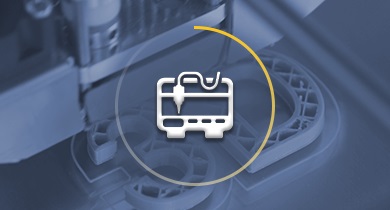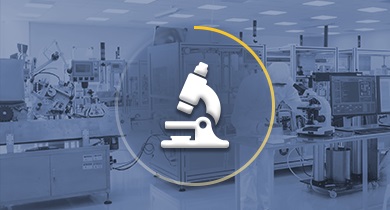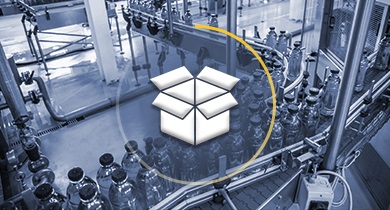- Grade, Type
- Silicon (SI)
- Low Strain Sponge (Silicone Foam)
- Low Rebound Sponge
- Low Elasticity Rubber Sponge (Hanenaito Sponge)
- Low Rebound Sponge
- With or w/o Adhesive
- Thickness T(mm)
- 3
- 5
- 6
- 8
- 10
- 15
- 20
- Width A(mm)[20–500/10mm jedn.]
- Length B(mm)[20–500/10mm jedn.]
- CAD
- 2D
- 3D
Sponge sheets / SI, Hanenaito® / low rebound / C15, C25, C27 / adhesive layer
Numer części:
.Rysunek konturowy i tabela specyfikacji
Dimensional Drawing

| No Adhesive | Adhesive | [M] Material | [H] Hardness | Color |
| SUNSET | SUNSETA | Low Elasticity Rubber Sponge (Hanenite Sponge) | Asker C25 | Black |
| SPTA | — | Low Rebound Sponge | Asker C27 | White |
| SNPG | — | Low Strain Sponge (Silicone Foam) | Asker C15 | Green (T 3 mm) White (T 6 mm) |
[ ! ] Temperature limit for seals is 60°C.
[ ! ]Hanenaito is a registered trademark of Naigai Rubber Industry Co., Ltd.
[ ! ] The values of hardness are reference values.
■ Accuracy Standards
T Dimension Tolerance
| T | Tolerance |
| 3·5 | ±0.5 |
| 6 to 20 | ±1.0 |
| A·B | Tolerance |
| 190 or Less | ±1.5 |
| 200 to 390 | ±2.0 |
| 400 or More | ±3.0 |
Specification Table
| Part Number | — | A | — | B | — | T |
| SUNSET | — | 500 | — | 350 | — | 10 |
| Part Number | 10 mm Increments | T Selection | |
| A | B | ||
| SUNSET SUNSETA | 20 to 500 | 20 to 350 | 3 5 8 10 |
| SPTA | 20 to 500 | 20 to 500 | 5 10 15 20 |
| SNPG | 20 to 500 | 20 to 300 | 3 6 |
■Low Elasticity Rubber Sponge (Hanenite Sponge)
·It is low elasticity rubber (Hanenite) foam.
·Excels in shock absorption.
·Lightweight with specific gravity at 0.3.
■Low Rebound Sponge
·It is bridge foam of styrene-type elastomer.
·Excellent shock absorption.
■Low Strain Sponge (Silicone foam)
·It is a silicone foam.
·The material resists crushing, even after repetitive impact absorption.
·Usable in a very wide temperature range of -40°C to 150°C.
[ ! ] Peel off the protective film on the surface before use.
■Characteristics of Sponges
| Item | Unit | Low Elasticity Rubber Sponge | Low Rebound Sponge | Low Strain Sponge |
| Apparent Density | g/cm3 | 0.3 | 0.097 | 0.26 |
| Air Bubble | — | closed cell structure | closed cell structure | closed cell structure |
| Tensile Strength | Mpa (kgf/cm2) | 0.9 {9} | 0.9 {9} | 0.32 {3.2} |
| Elongation | % | 480 | 210 | 73 |
| 25% Compression Set | % | 62 | 5.1 | 0.2 |
| Temperature of Continuous Use | °C | 20 to 60 | 10 to 50 | −40 to 150 |
| Abrasion Resistance | ○ | ○ | △ | |
| Anti-Aging | △ | △ | ◎ | |
| Water Resistance | △ | ◎ | ◎ | |
| Chemical Resistance | Oil (Gasoline) | × | × | × |
| Acid | × | ○ | ◎ | |
| Alkali | × | ○ | ◎ | |
| Organic Solvent | × | × | × | |
[ ! ] Compression Set JIS K6262
[ ! ] Values in the table to the right are for reference and not guaranteed.
Lista numerów części
| Numer części |
|---|
Cena jednostkowa (bez VAT)(Cena jednostkowa z podatkiem) | Standardowa data wysyłki |
|---|
- ( - ) | 7 dni robocze |
- ( - ) | 7 dni robocze |
- ( - ) | 7 dni robocze |
- ( - ) | 7 dni robocze |
Szczegółowe informacje
Podstawowe informacje
Kontury i specyfikacja
Specifications/Overview
■Low Elasticity Rubber Sponge (Hanenite Sponge)
·It is low elasticity rubber (Hanenite) foam.
·Excels in shock absorption.
·Lightweight with specific gravity at 0.3.
■Low Rebound Sponge
·It is bridge foam of styrene-type elastomer.
·Excellent shock absorption.
■Low Strain Sponge (Silicone foam)
·It is a silicone foam.
·The material resists crushing, even after repetitive impact absorption.
·Usable in a very wide temperature range of -40°C to 150°C.
[ ! ] Peel off the protective film on the surface before use.
■Characteristics of Sponges
| Item | Unit | Low Elasticity Rubber Sponge | Low Rebound Sponge | Low Strain Sponge |
| Apparent Density | g/cm3 | 0.3 | 0.097 | 0.26 |
| Air Bubble | — | closed cell structure | closed cell structure | closed cell structure |
| Tensile Strength | Mpa (kgf/cm2) | 0.9 {9} | 0.9 {9} | 0.32 {3.2} |
| Elongation | % | 480 | 210 | 73 |
| 25% Compression Set | % | 62 | 5.1 | 0.2 |
| Temperature of Continuous Use | °C | 20 to 60 | 10 to 50 | −40 to 150 |
| Abrasion Resistance | ○ | ○ | △ | |
| Anti-Aging | △ | △ | ◎ | |
| Water Resistance | △ | ◎ | ◎ | |
| Chemical Resistance | Oil (Gasoline) | × | × | × |
| Acid | × | ○ | ◎ | |
| Alkali | × | ○ | ◎ | |
| Organic Solvent | × | × | × | |
[ ! ] Compression Set JIS K6262
[ ! ] Values in the table to the right are for reference and not guaranteed.
General Information - Panels (polyurethane rubber, rubber, foam, felt)
_-_Sortiment.jpg)
Selection details of panels (polyurethane rubber, rubber, foam, felt)
- Material: polyurethane rubber (PU/PUR), heat-resistant polyurethane rubber, low-impact polyurethane rubber, abrasion-resistant polyurethane rubber, antistatic polyurethane, nitrile (NBR), chloroprene rubber (CR), polyethylene (EPDM), silicone (SI), fluorine (FPM), butyl rubber (IIR), natural rubber (NR), hard rubber, special synthetic rubber, polyurethane foam, head-insulating foam, polyethylene foam, low-rebound foam
- Thickness (mm): 0.5 to 50
- Width (mm): 3 to 500
- Length (mm): 10 to 2000
Description/Basics
Foam plates and rubber plates are provided for damping or for sound proofing. MISUMI offers these in various Shore hardening for a wide variety of tasks. Due to the variety of materials, different resistances to environmental influences are possible depending on the application. The foam plates reduce sound in machines and can reduce the sound emissions of a system. For more information on foam characteristics, follow this link.
Rubber plates or foam plates are also suitable in conveyor systems to absorb components to be transported at a dampened level or to protect them from damage as a lateral guide when the components bump into each other. Hard rubber panels or low-impact rubber or foam panels reduce the impact energy of the components. These minimize and lower the vibrations in an application.
In addition, MISUMI offers highly abrasion-resistant polyurethane (Vulkollan), which has an abrasion resistance that is six times higher than with conventional polyurethane.
Ceramic polyurethane plates contain ceramic particles. After machining, these can have a smooth surface despite low Shore hardness.
The polyurethane rubber plates are also available antistatically. The specific resistance of antistatic polyurethane plates prevents static charging. This prevents any damage to electronic components.
For applications with higher temperatures, MISUMI offers heat-resistant polyurethane rubber, which can withstand a temperature range of up to approx. ~120°C (see the product specifications for exact information).
MISUMI also offers low-friction and anti-friction rubber plates. Low-friction rubber plates are often used in the gentle component guide for belt conveyors and roller conveyors.
Felt plates have the property of absorbing or dispensing oil and other liquids via the capillary effect. This property can be used to remove, for example, excess oil on a belt conveyor.
In addition, MISUMI offers rubber plates and foam plates that are self-adhesive for simplified assembly. Furthermore, you will find double-adhesive tape for attaching rubber plates and foam plates.
Additional properties on foam panels and rubber plates can be found in the Properties PDF.
MISUMI also offers these products in a round shape as discs and sleeves made of rubber, natural rubber, foam and felt.
Application Examples - Panels (polyurethane rubber, rubber, foam, felt)

Application example
(1) Low-friction rubber plate (2) belt conveyor

Application example
(1) Vibration damping plate
Industrial Applications




